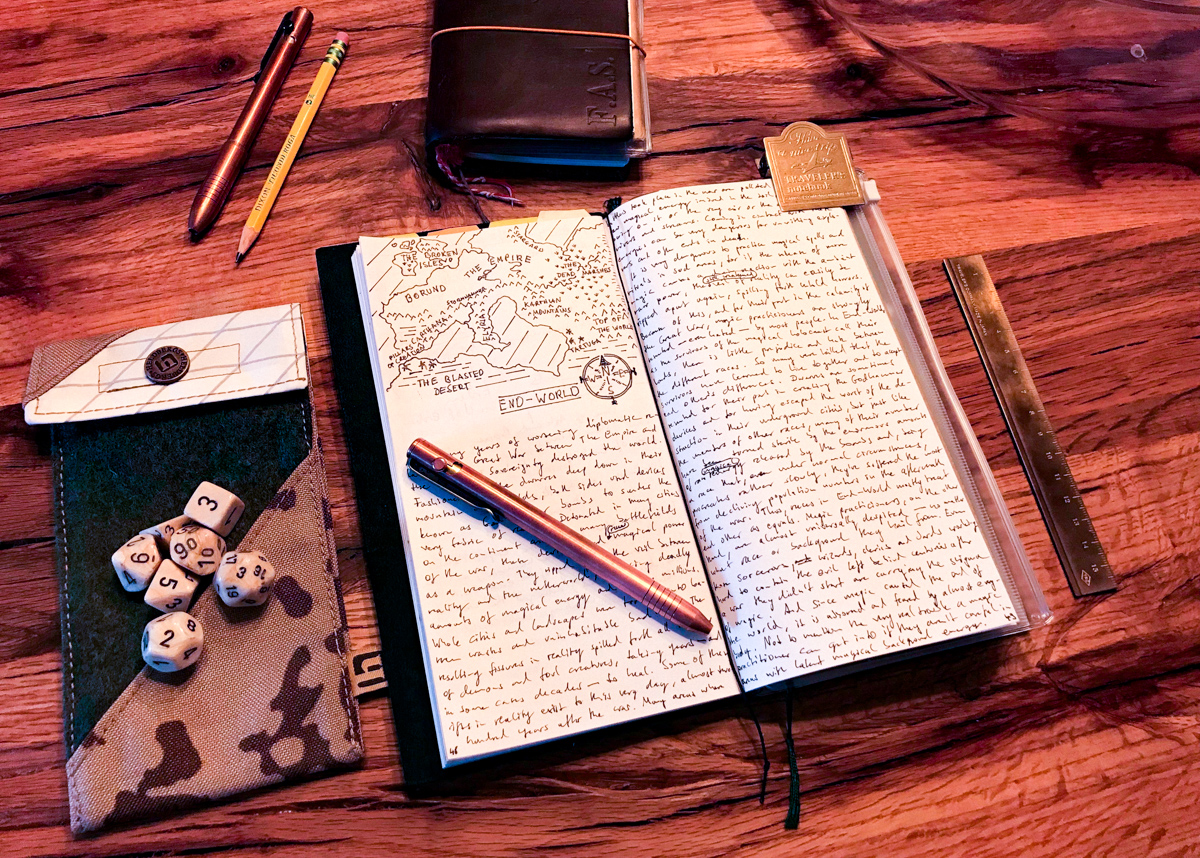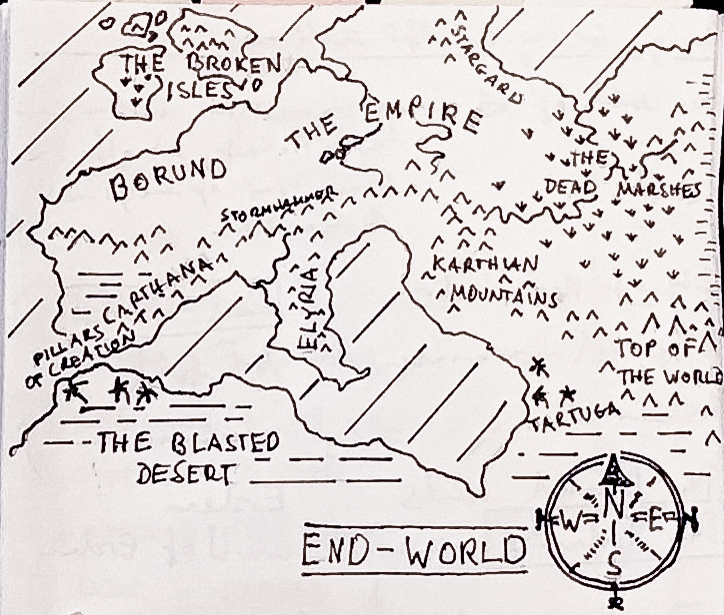End-World Adventures
A short introduction to the Dungeons & Dragons campaign setting I am working on.

My friend Halefa has been going on about Critical Role for ages, but it took her recent blog post about starting a campaign journal for Dungeons & Dragons for me to actually start to watch it. Well, guess what, now I am hooked. And as a result, I immediately got inspired to design my own D&D setting. I’ve been wanting to play D&D again for ages – despite reading some source books here and there, I haven’t played it in about twenty years. One reason being that I never found anybody – local or remote – who was serious enough about making a campaign happen and who had a compatible schedule. Part of that is clearly my fault, as I have been busy doing one thing or another for most of those last twenty years and D&D somehow never made it high enough up the priority list.
 In any case, I have now started to design a setting for a campaign I might try my hand at DMing in the future (something that I have never done before). I am calling this setting End-World and I have started writing some background for its history and have also drawn a first rough map of part of the main continent the campaign will be set on. My one sentence pitch for the setting is this: Imagine a fantasy version of Fallout, where the world was wiped out by magic instead of nuclear weapons. It is a gritty, post-apocalyptic setting that challenges some of the usual pre-conceived notions held within D&D lore and makes magic usage an unusually precarious business.
In any case, I have now started to design a setting for a campaign I might try my hand at DMing in the future (something that I have never done before). I am calling this setting End-World and I have started writing some background for its history and have also drawn a first rough map of part of the main continent the campaign will be set on. My one sentence pitch for the setting is this: Imagine a fantasy version of Fallout, where the world was wiped out by magic instead of nuclear weapons. It is a gritty, post-apocalyptic setting that challenges some of the usual pre-conceived notions held within D&D lore and makes magic usage an unusually precarious business.
Here’s the background lore I have written so far:
After many years of worsening diplomatic relations, the Great War between The Empire and the Sovokarn Sovereignty destroyed the world. Both sides used devices known as Godhammer bombs, fashioned by the dwarves deep down in their mountain strongholds, to sunder the very fabric of reality. Detonated in many cities on the continent and on many battlefields of the war, these devices used raw magical power as a weapon. They ripped apart the veil between the planes of existence, releasing deadly amounts of primal magical energy and killing millions.
Whole cities and landscapes were turned into barren wastes and uninhabitable badlands. The fissures in reality resulting from the Godhammer detonations spilled forth all manner of demons, foul creatures and elemental forces, taking years – and in some cases decades or even centuries – to heal themselves. Some of these rifts in reality exist to this very day, almost two hundred years after the war. Many areas where battles took place in the war are polluted with volatile raw magical energy, which is imbued in the soil, the plants and animals living on it, the water of lakes, rivers and streams, or even the very air. Coming into contact with these energies can be very dangerous for unwitting explorers and often ends in their death.
It is very dangerous to practice magical spells and rituals in such areas, for if the release of more magic causes a chain reaction with the ambient raw magical power, the still-weakened veil of reality can easily be ripped apart again, spilling forth untold horrors. Because of this, and for their part in the calamity of the Great War, magic practitioners are strongly resented – even hated – by most people.
In End-World, as the survivors of the magical holocaust call their lands, there is little prejudice and hate between the different races. So many were killed, that the survivors learned to live together. With so much death and misery everywhere, most people can only afford to look out for their immediate family and neighbours, anyway. Dwarves are sometimes resented for their part in creating the Godhammer devices, and for having escaped the worst of the destruction in their underground cities. But just like the members of other races, many of their number have been turned sterile by the enormous amounts of raw magical energy released by the bombs, and, being a race that, even under normal circumstances, procreates rather slowly, they’ve suffered the most from declining population numbers in the aftermath of the war. Not a few people think they got what they deserved, after unleashing hell on the world.
Magic practitioners, on the other hand, are almost universally disliked – no matter what race or background they hail from. Even those sorcerers, wizards, clerics (and even bards – should they opt to use magic) working hard to contain the evil left behind centuries after a war they didn’t start, are carrying the stigma of magic with them everywhere they go. Since magic caused the end of the world, it is now abhorred and feared by almost everybody. And there is a very real danger for any magic practitioner who isn’t extremely careful in wielding their powers in areas with significant latent magical background energy. One spell too many might tip the scales and unleash hell on earth upon a village or even a whole landscape. So it is a small wonder that many a wizard has been chased from town in anger. In some places, children are banished, or even killed outright, should they show any sign of magical abilities – for fear that they might damn the whole community. And those fears are well founded, too.

